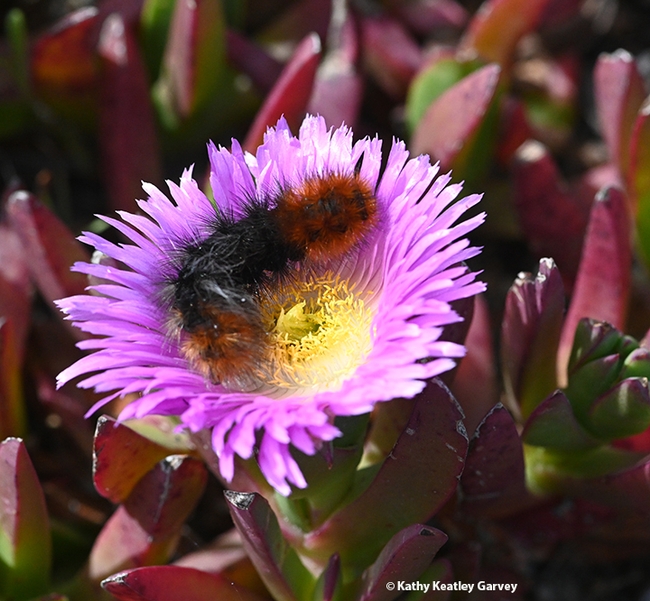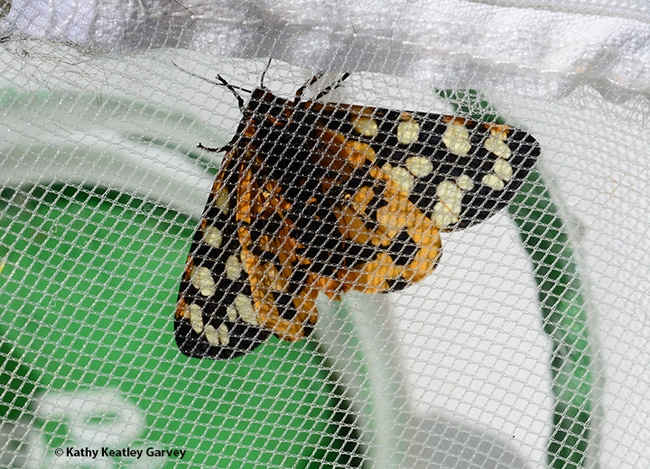You gotta love those woolly bear caterpillars.
Richard "Rick" Karban, UC Davis distinguished professor of entomology, studies them. The rest of us admire them.
We usually see them in the spring along the cliffs of Bodega Head on the Sonoma coast. They're reddish brown in the center and black on both ends.
Some folks say they're winter weather predictors. Not! We do, however, see them curl into a bristly ball when they sense danger.
The National Weather Service (NWS) says: "According to folklore, the amount of black on the woolly bear in autumn varies proportionately with the severity of the coming winter in the locality where the caterpillar is found. The longer the woolly bear's black bands, the longer, colder, snowier, and more severe the winter will be. Similarly, the wider the middle brown band is associated with a milder upcoming winter. The position of the longest dark bands supposedly indicates which part of winter will be coldest or hardest. If the head end of the caterpillar is dark, the beginning of winter will be severe. If the tail end is dark, the end of winter will be cold. In addition, the woolly bear caterpillar has 13 segments to its body, which traditional forecasters say correspond to the 13 weeks of winter."
"As with most folklore, there are 2 other versions to this story," NWS acknowledges. "The first one says that the woolly bear caterpillar's coat will indicate the upcoming winter's severity. So, if its coat is very woolly, it will be a cold winter. The final version deals with the woolly bear caterpillar's direction of travel of the worms. It is said that woolly bear's crawling in a southerly direction are trying to escape the cold winter conditions of the north. On the other hand, woolly bear's crawling on a northward path would indicate a mild winter."
If you attend the Bohart Museum of Entomology Moth Night at UC Davis, you'll see specimens of the adults--the tiger moths, Platyprepia virginalis. They're sometimes called the "Ranchman's Tiger Moth." They are boldly marked, like a tiger. (Who says moths are drab-looking?)
The Bohart is celebrating National Moth Night from 8 p.m. to 11 p.m. on Saturday, July 30: both (1) indoors in Room 1124 of the Academic Surge Building, 455 Crocker Lane, UC Davis campus, and (2) outdoors, by the blacklighting display, within a short walking distance.
Indoors you'll see the Bohart's global collection of moths, and outside, you'll see moths and other insects hanging on a white sheet in the blacklighting display. They are drawn there by an ultraviolet (UV) light.
The open house is free, family friendly and open to the public. A craft activity is planned and refreshments (hot cocoa and cookies) will be served, says Tabatha Yang, education and outreach coordinator.
The Bohart Museum, founded in 1946 and directed by Lynn Kimsey, UC Davis distinguished professor of entomology, houses a worldwide collection of eight million insects. It also houses a live "petting zoo" (Madagascar hissing cockroaches, stick insects and tarantulas) and an insect-themed gift shop.
Attached Images:

